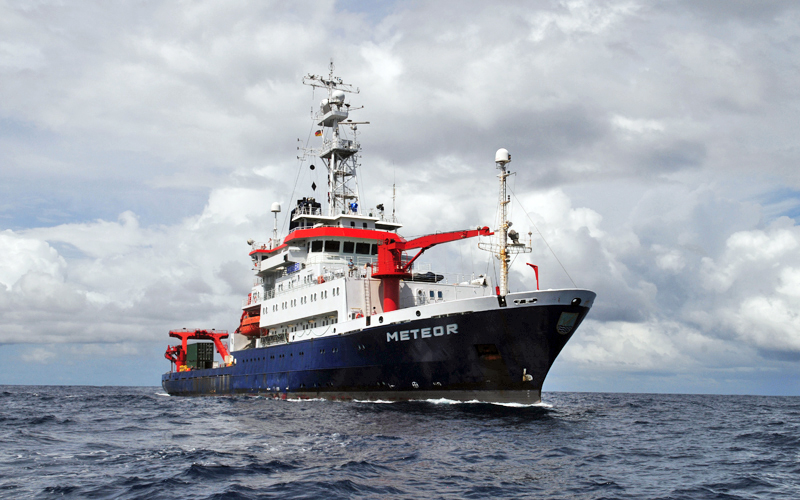METEOR M154/1
- Area:
- Caribbean
- Time:
-
03.04.2019 - 25.04.2019
- Institution:
- GEOMAR
- Chief scientist:
- Christian Berndt
Deep-seated collapses of volcanic islands have generated the largest volume mass flows worldwide. These mass flows might trigger mega-tsunamis. The way in which these collapse events are emplaced is poorly understood, even though this emplacement process determines the scale of associated tsunamis.
Key questions such as whether they are emplaced in single or multiple events, how they may incorporate seafloor sediment to increase their volume, and how they are related to volcanic eruption cycles and migration of volcanic centers, remain to be answered.
This project will form a part of the comprehensive study of large volcanic island landslide deposits and is directly linked to IODP drilling campaign in the Lesser Antilles (IODP Leg 340). Unfortunately, Leg 340 only recovered material from a single site within the volcanic landslide deposits off Montserrat, and even at this site recovery was not continuous. This single IODP site is insufficient to document lateral variation in landslide character, which is critical for under-standing how it was emplaced. Combining 3D seismology (Leg 1) and MeBo cores (Leg 2) will provide a unique dataset of the internal structure, composition and source of material throughout a volcanic island landslide. The results will significantly contribute to understanding the emplacement of volcanic island landslides and they will allow us to assess the associated tsunami risk. The main scientific goals of this project are to determine where the landslides are sourced from; to understand how these landslides are emplaced; and to understand the relationship between landslides, eruption cycles and initiation of new volcanic centres.



